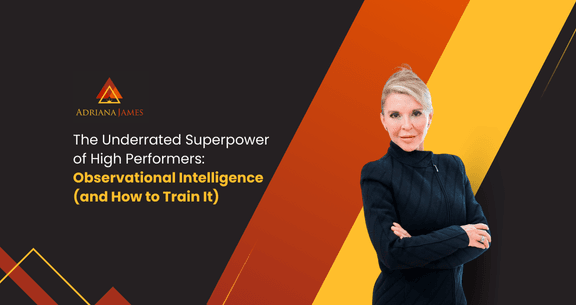By Dr Adriana James | NLP Master Trainer | Tad James Co.
Part 1 of this blog series is here if you missed it. The contents of this blog aligns with the above video and picks up from the middle of the video onwards.
Ever walked away from a conversation and thought, “Something felt off”—but couldn’t explain why?
That gut feeling is often your unconscious mind picking up on subtle, nonverbal cues. In NLP, this is a skill we train consciously. It’s called sensory acuity observational intelligence, and it’s one of the most valuable tools in any leader, coach, or therapist’s toolkit.
Why Guess When You Can Know?
Most people rely on mind-reading assumptions. They interpret a smile as “happy” or a pause as “hesitation.”
But what if that smile masks stress? What if the pause signals deep thought?
Without training, we’re left to guess. And guesswork is unreliable.
In NLP, we teach you to observe, compare, and calibrate—like an emotional detective. You learn to spot:
- Real-time emotional shifts
- Truth vs. discomfort
- Tension vs. openness
The Skill That Helped a Hypnotherapist Read a Pulse
Dr. Adriana James shares the story of Dr. Milton Erickson, the legendary hypnotherapist whose observation skills were so refined that he once detected a patient entering trance by noticing the pulse change in her ankle.
This wasn’t magic. It was mastery. It was sensory acuity at work. It was observational intelligence in practice
Here’s What You Can Start Noticing Right Now:
- Skin Color Shifts
Watch for subtle darkening or lightening. Relaxed people have more blood flow to the face, which deepens tone. Tension pulls blood away, making skin appear lighter—regardless of complexion. - Facial Tension
Watch for micro-twitches, fixed smiles, or frozen expressions—especially in high-stakes conversations. - Eye Movements
Do they look up, sideways, or down when answering? Eye access cues can reveal how someone is processing information (taught in NLP Practitioner). - Breathing Rate
Subtle changes in rhythm often reflect emotional shifts, even if the person is saying “I’m fine.”
It’s All About Comparison
To read people accurately, you don’t just observe once—you compare across time. For example:
- How does their face look when telling the truth?
- How does it shift when they say something uncomfortable?
- What changes occur when you bring up certain topics?
Over time, you become a real-time decoder of behavior.
This allows you to adapt your communication in the moment
Want to Learn This Professionally?
These aren’t skills you get from a book or blog—they require hands-on, guided practice. That’s what you’ll experience in our NLP Practitioner and Master Practitioner Trainings.
✔️ Master the art of calibration
✔️ Enhance your coaching or therapy sessions
✔️ Become more impactful in your chosen field
Join NLP Practitioner Training »
Explore NLP Master Practitioner »
When you learn to see what others miss, you lead where others follow. You create influence and trust that others can’t replicate.

